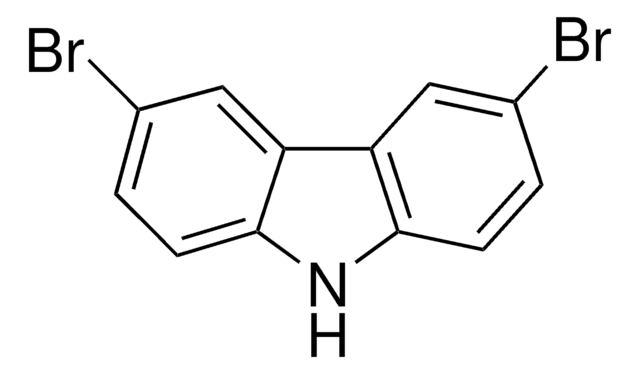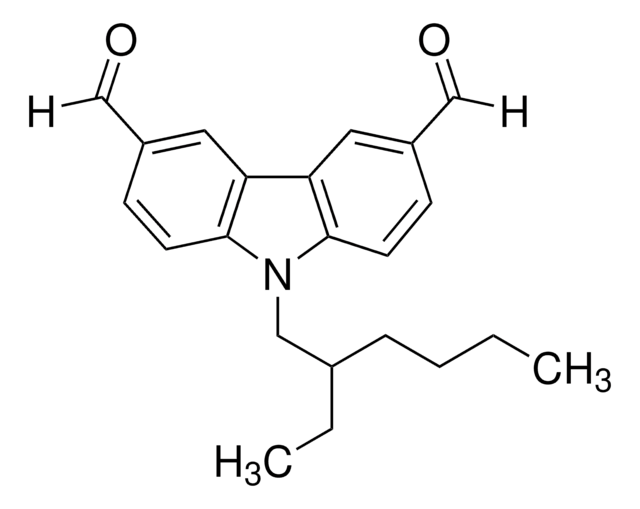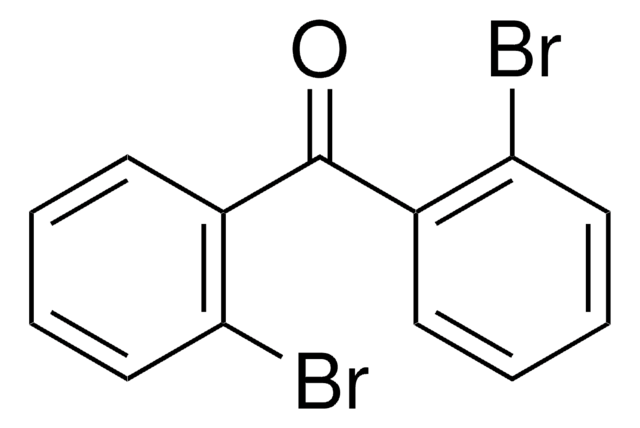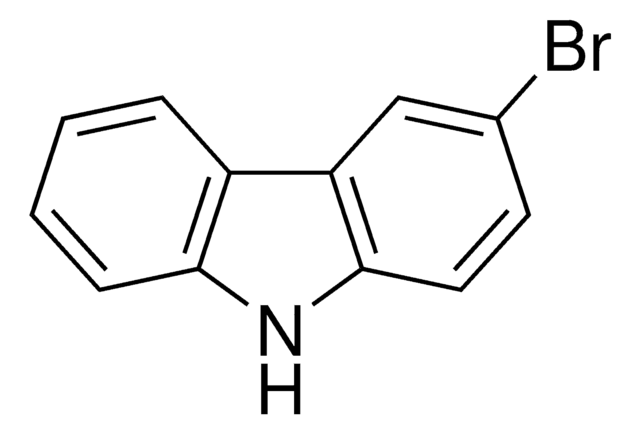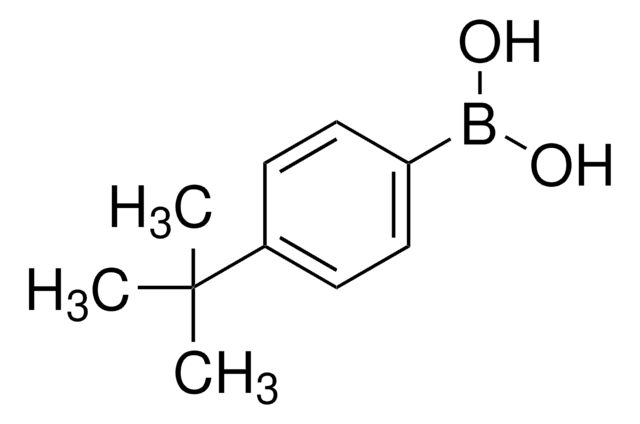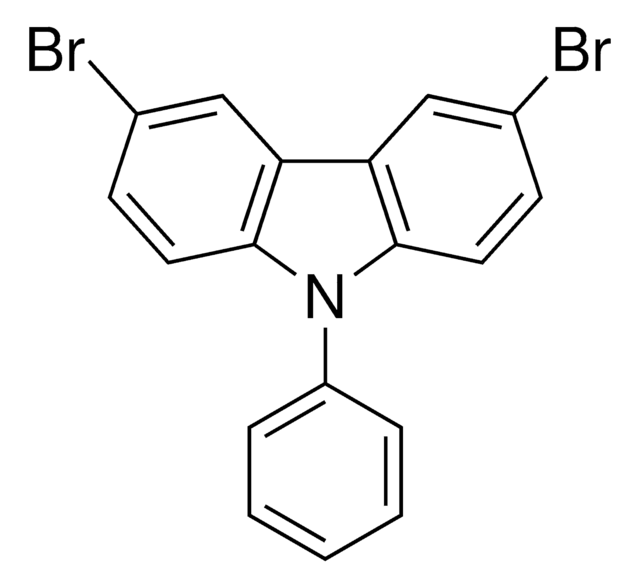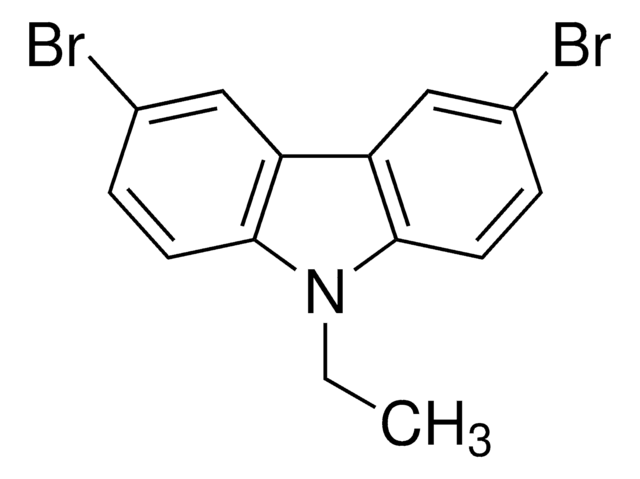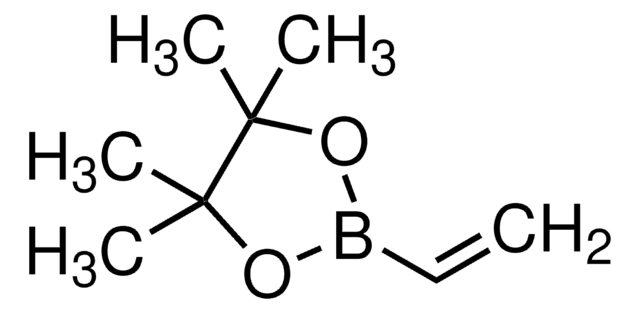All Photos(2)
Synonym(s):
2,7-Dibromocarbazole
Empirical Formula (Hill Notation):
C12H7Br2N
CAS Number:
Molecular Weight:
325.00
MDL number:
UNSPSC Code:
12352100
PubChem Substance ID:
NACRES:
NA.22
Recommended Products
form
solid
mp
225-230 °C
SMILES string
Brc1ccc2c(c1)[nH]c3cc(Br)ccc23
InChI
1S/C12H7Br2N/c13-7-1-3-9-10-4-2-8(14)6-12(10)15-11(9)5-7/h1-6,15H
InChI key
QPTWWBLGJZWRAV-UHFFFAOYSA-N
Signal Word
Danger
Hazard Statements
Precautionary Statements
Hazard Classifications
Acute Tox. 3 Oral - Eye Irrit. 2 - Skin Irrit. 2 - STOT SE 3
Target Organs
Respiratory system
WGK
WGK 3
Flash Point(F)
Not applicable
Flash Point(C)
Not applicable
Certificates of Analysis (COA)
Search for Certificates of Analysis (COA) by entering the products Lot/Batch Number. Lot and Batch Numbers can be found on a product’s label following the words ‘Lot’ or ‘Batch’.
Already Own This Product?
Find documentation for the products that you have recently purchased in the Document Library.
Jiehong Guo et al.
Environmental science & technology, 51(1), 89-97 (2016-12-21)
Polyhalogenated carbazoles (PHCZs) have been increasingly detected in the environment. Their similarities in chemical structure with legacy pollutants and their potential toxicity have caused increasing concern. In this work, 112 Ponar grab and 28 core sediment samples were collected from
L Assumma et al.
ChemSusChem, 13(9), 2419-2427 (2020-04-22)
To reduce the amount of conducting additives generally required for polynitroxide-based electrodes, a stable radical (TEMPO) is combined with a conductive copolymer backbone consisting of 2,7-bisthiophene carbazole (2,7-BTC), which is characterized by a high intrinsic electronic conductivity. This work deals
Li Fang et al.
Ecotoxicology and environmental safety, 184, 109609-109609 (2019-09-14)
Carbazole and halogenated carbazoles have been widely detected throughout the environment in soil, river deposits, and lake sediments. Human exposure to these compounds may occur through inhalation, drinking water, dietary intake and/or skin contact, and exposure levels in the body
Yan Wu et al.
Environmental science & technology, 52(8), 4536-4545 (2018-03-23)
Polyhalogenated carbazoles (PHCZs) were recently discovered in Great Lakes sediment and other aquatic systems. However, knowledge about their bioaccumulation and potential risks to fish and wildlife remains very limited. The present study investigated PHCZs in Great Lakes lake trout (
Wen-Ling Chen et al.
Chemosphere, 150, 586-595 (2016-02-28)
Carbazole and some of its derivatives may possess dioxin-like toxicity and could be persistent in the environment, but information on their distribution and environmental fate is limited. This study developed and validated an ultra-trace targeted-analysis method for the determination of
Our team of scientists has experience in all areas of research including Life Science, Material Science, Chemical Synthesis, Chromatography, Analytical and many others.
Contact Technical Service